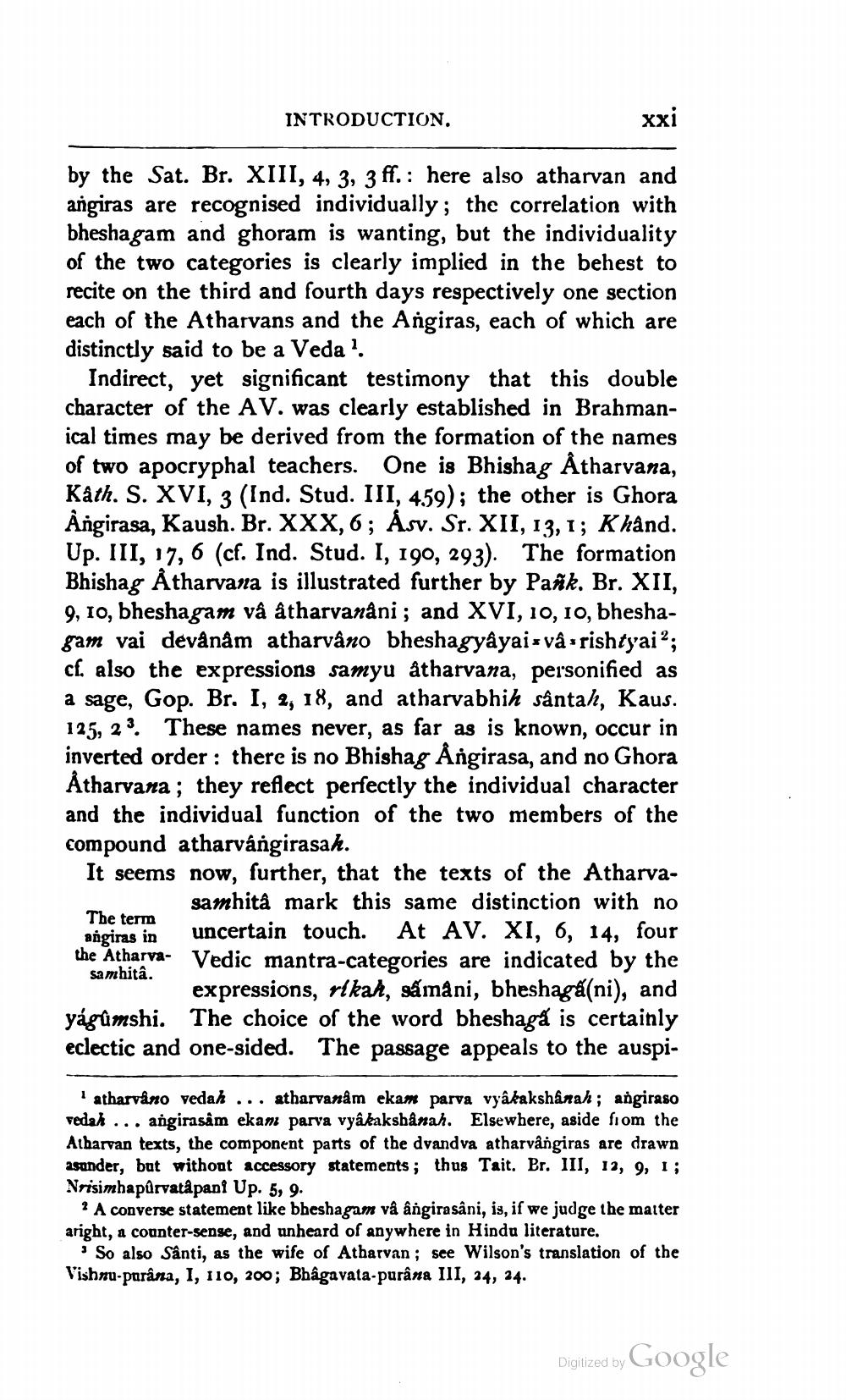________________
xxi
:
by the Sat. Br. XIII, 4, 3, 3 ff. here also atharvan and angiras are recognised individually; the correlation with bheshagam and ghoram is wanting, but the individuality of the two categories is clearly implied in the behest to recite on the third and fourth days respectively one section each of the Atharvans and the Angiras, each of which are distinctly said to be a Veda'.
INTRODUCTION.
Indirect, yet significant testimony that this double character of the AV. was clearly established in Brahmanical times may be derived from the formation of the names of two apocryphal teachers. One is Bhishag Atharvana, Kath. S. XVI, 3 (Ind. Stud. III, 459); the other is Ghora Angirasa, Kaush. Br. XXX, 6; Åsv. Sr. XII, 13, 1; Khând. Up. III, 17, 6 (cf. Ind. Stud. I, 190, 293). The formation Bhishag Atharvana is illustrated further by Pank. Br. XII, 9, 10, bheshagam vâ âtharvanâni; and XVI, 10, 10, bheshagam vai devânâm atharvâno bheshagyâyai vâ rishtyai2; cf. also the expressions samyu âtharvana, personified as a sage, Gop. Br. I, 2, 18, and atharvabhik sântah, Kaus. 125, 23. These names never, as far as is known, occur in inverted order: there is no Bhishag Ångirasa, and no Ghora Åtharvana; they reflect perfectly the individual character and the individual function of the two members of the compound atharvángirasak.
The term angiras in
It seems now, further, that the texts of the Atharvasamhitâ mark this same distinction with no uncertain touch. At AV. XI, 6, 14, four the Atharva Vedic mantra-categories are indicated by the expressions, rikak, samâni, bheshaga(ni), and yágumshi. The choice of the word bheshaga is certainly eclectic and one-sided. The passage appeals to the auspi
samhitâ.
1 atharvano vedah atharvanâm ekam parva vyâkakshanah; angiraso vedah...angirasâm ekam parva vyâkakshanah. Elsewhere, aside from the Atharvan texts, the component parts of the dvandva atharvângiras are drawn asunder, but without accessory statements; thus Tait. Br. III, 12, 9, 1; Nrisimhapûrvatâpanî Up. 5, 9.
? A converse statement like bheshagam vâ ângira sâni, is, if we judge the matter aright, a counter-sense, and unheard of anywhere in Hindu literature.
'So also Sânti, as the wife of Atharvan; see Wilson's translation of the Vishnu-parâna, I, 110, 200; Bhagavata-purâna III, 24, 24.
Digitized by Google




